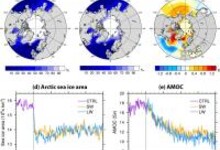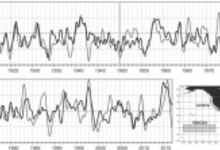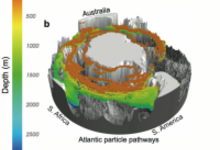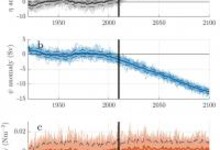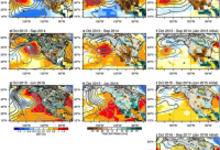Research Highlights
We aim to feature the latest research results from US scientists whose published paper features work that is sponsored by one or more sponsoring agency programs of US CLIVAR (NASA, NOAA, NSF, DOE, ONR). Check out the collection of research highlights below and sort by topic on the right. Interested in submitting an article for consideration? See our Research Highlight Submission Guidelines page for more information.
The Arctic sea ice decline may explain the suggested slow-down of the Atlantic meridional overturning circulation and the persistence of the Warming Hole.
New research confirms that links between warm and cool years in the California Current System and El Niño are important but imperfect.
A new study combines ocean observations with three state-of-the-art ocean models, revealing the full three-dimensional pathway of deep water to the surface of the Southern Ocean for the first time.
A new study helps clarify how past and future coastal sea level changes are related to local winds and large-scale ocean circulation.
Researchers have developed a state-of-the-art drought and wildfire prediction system, showing the multi-year predictive skills of drought and wildfire conditions beyond the typical timescale of seasonal climate forecast models.

